How I Helped Chester Gregory Make $3,076 in 1.5 Hrs

Background
Meet Chester:
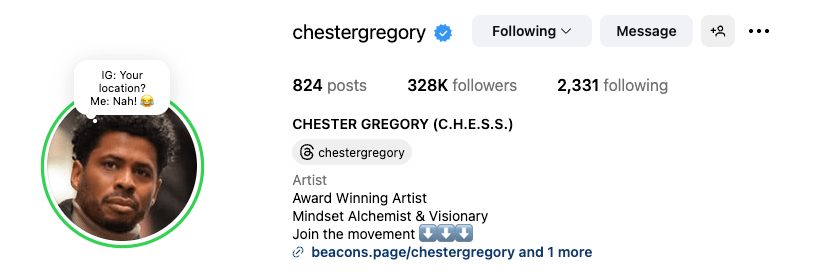
He is a well-known figure with a combined following of 490,000 across Instagram and Facebook. He’s been featured in the NYT, performed on Broadway, and been a part of many movies.
Before starting this case study, I just wanna say that I’m very grateful for Chester to have put his trust in my strategies and direction. 🙏
Most of his audience knows him for his skits, his humor, and particularly, his astrology-themed content. That astrology angle was important, and I’ll explain why in a second.
The Challenges We Had to Solve
The thing is, Chester has never never sold to his audience before, so we were solving a deeper problem: how do you sell a transformation to an audience that has never been asked to buy before?
There were three main challenges we identified at the outset:
Chester’s audience followed him for entertainment. They loved his humor and personality, but they didn’t necessarily associate him with something they would pay for. Their default relationship with him was "fun guy on the internet," not "mentor" or "guide."
There had been no previous monetization. That meant no buying behavior. So, any kind of pitch had to be carefully introduced. We needed to transition them from passive consumers to active participants without breaking trust.
His offer was in the self-help space, which made things trickier. Self-help doesn’t offer a single, tangible outcome. Success looks different for everyone. It’s hard to write copy around a vague promise like "living a better life."
Our Strategy
Solving Problem #3: Making an Intangible Offer Tangible
We had to start by anchoring the offer in something the audience already cared about.
While Chester's skits varied, the common thread across his content was astrology.
That was our in.
It was familiar, it was engaging, and it already had emotional weight for his followers.
Chester eventually wanted to launch a self-improvement program, something that would help people live in alignment with who they are.
We couldn't just lead with that because the audience would feel the disconnect.
Imagine following someone for years for funny astrology memes and relatable content, and suddenly they start talking about self help and getting better.
So we came up with something smarter.
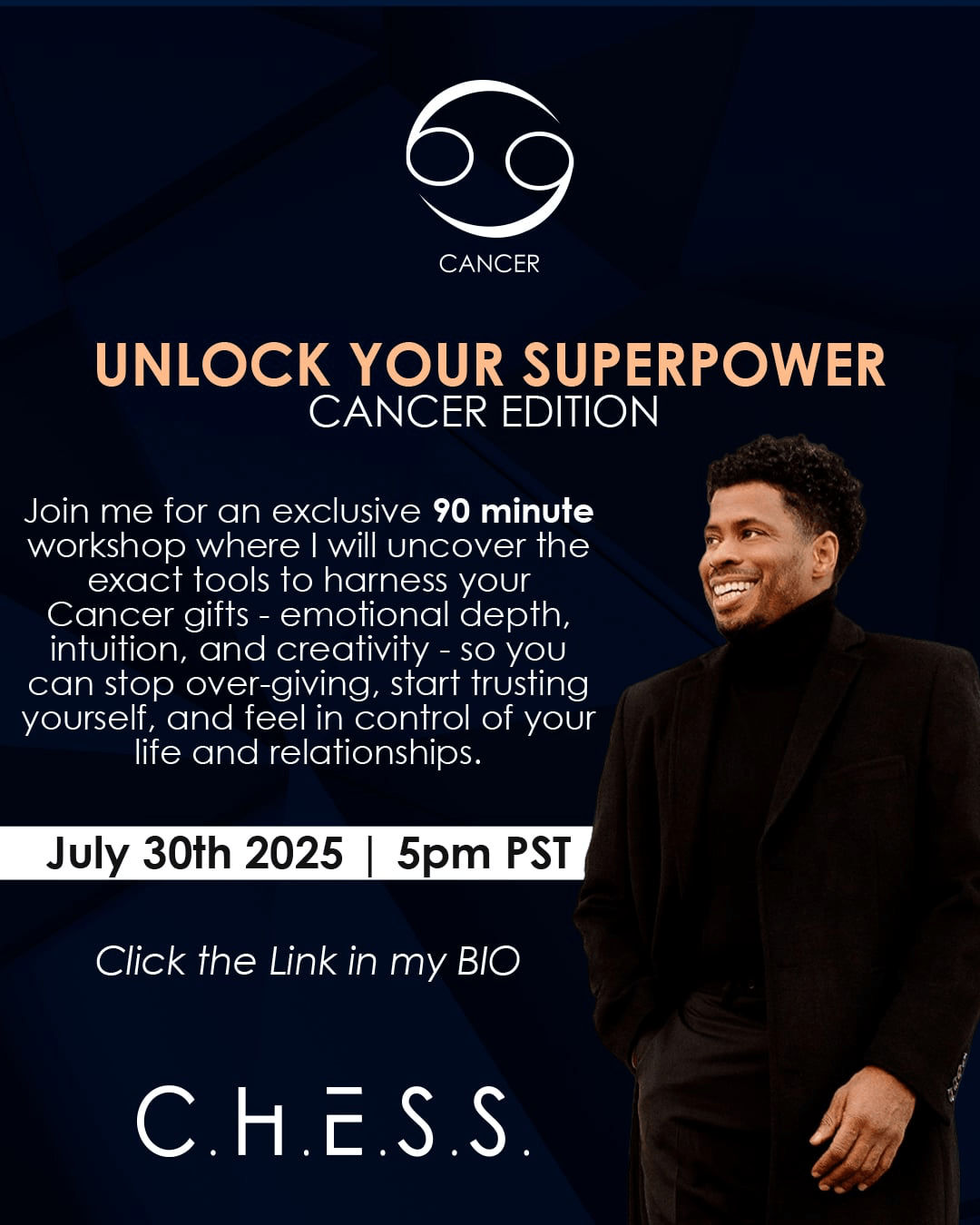
We decided to create a workshop titled "Unlock Your Superpower", but instead of making it general, we made it specific to one zodiac sign: Cancer.
The Cancer edition gave us a concrete way to speak to a defined segment of his audience. It also made the offer feel highly personal.
The core premise was this: the dominant qualities of a Cancer sign like empathy, protectiveness, and creativity are also often the root of internal blocks.
We framed the workshop as a 90-minute session to help attendees turn these "weaknesses" into strengths.
That gave us a defined outcome. And underneath it, we were actually introducing them to Chester's self-help system, just through the lens of astrology.
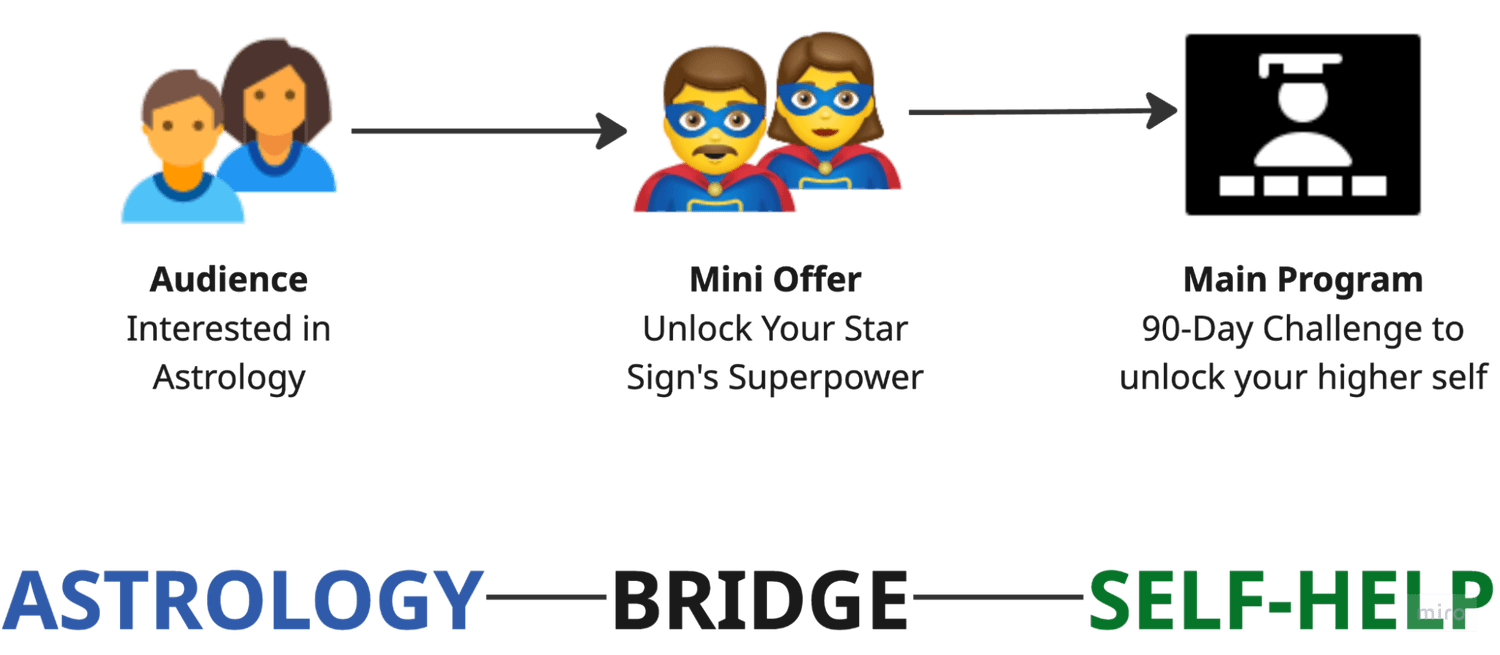
I’ll walk over the exact number of people who signed up and all the numbers towards the end of this page!
Solving problem #2: Speaking to a Broad Set of Desires
One of the toughest parts about marketing self-help is the wide variation in what people want.
A copywriter will tell you to lead with one benefit, but that doesn’t always work in self-help or spirituality based offers.
What someone wants from a self-help or spiritual experience can vary widely: more confidence, better relationships, clarity, peace of mind, etc.
So I did something simple but effective.
I researched how other successful creators in the spirituality and self-improvement space frame their messages. What I found was that if you can’t pick one clear desire, the next best thing is to list them all — in descending order of priority.
Example: @saturnrevolution on her website:
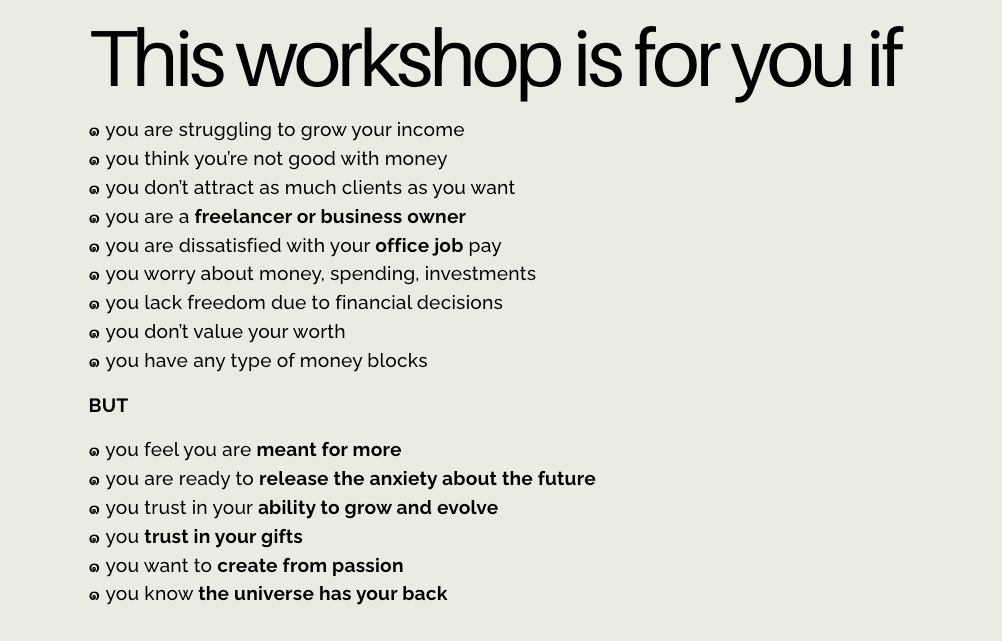
So we led with the most common aspiration, followed it with others, and tied them all back to the workshop.
Example: Us on the workshop landing page:
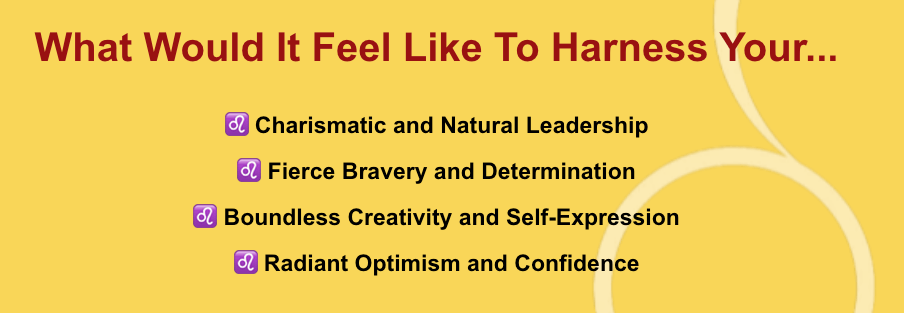
This way, the message stayed clear but cast a wide enough net to resonate.
Solving problem #1:
There’s something I’ve learned after doing this kind of work for a while. People buy when either of two things are true:
The problem they’re facing is so painful that they’re actively seeking a solution.
They trust and like the person offering the solution so much that they want to be part of whatever they’re doing.
Ideally, both are true. But often, just one can be enough. In Chester’s case, the problem we were solving (living more in alignment) wasn’t extremely urgent.
It was moderate.
But his audience really loved him.
His relationship with them, built over years of consistent and authentic content, meant that many people signed up just because they wanted to experience something with him.
That was powerful.
This is the same thing that led to an exceptionally thriving experience during the live workshop.
Attendees were giggling, the energy was super high, Chester was making jokes, interacting with people.
Beautiful.
Also, props to Chester - he’s an amazing host and REALLY good with people!
Building The Workshop Experience
I helped him with every part of the funnel.
We wrote copy for the landing page, email reminders, a 4000-word workshop script, and sales pitch.
I also built the slide deck (which ended up being a beautiful 130-page slide deck!)
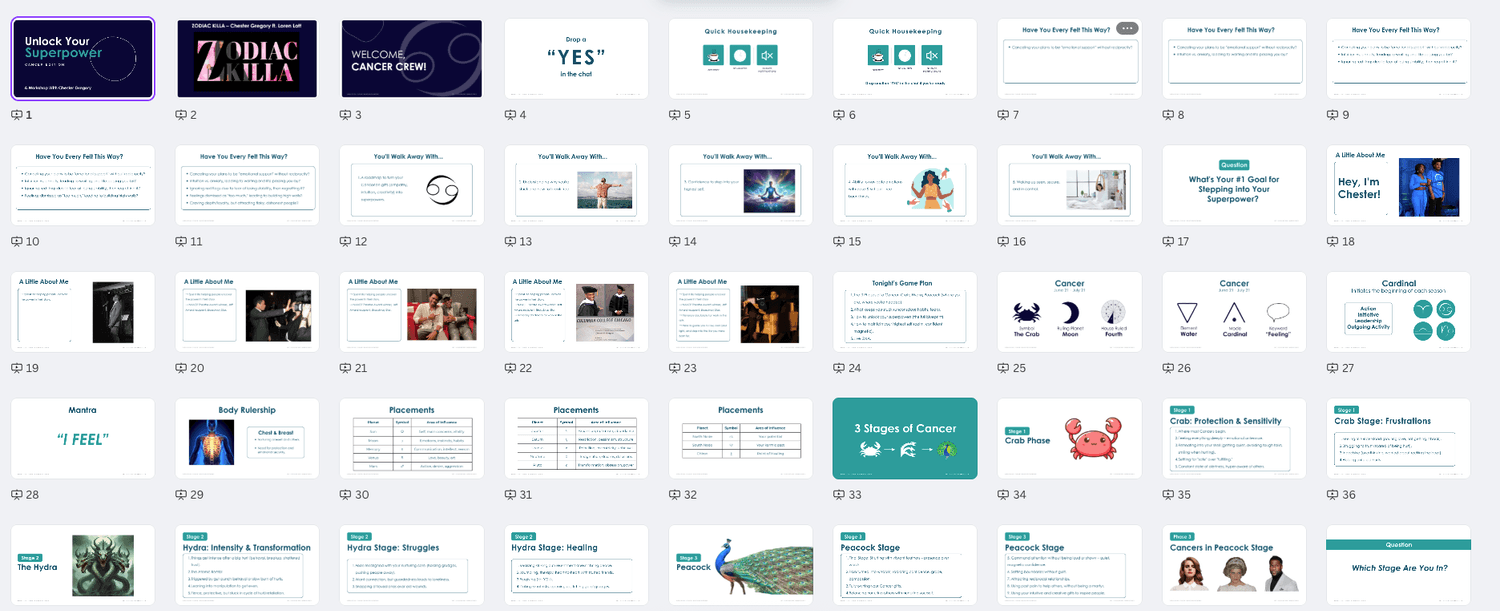
Pricing
One of the first important decisions we made was about pricing.
There’s a temptation to keep the first offer free, especially when you’re dealing with a cold (or never-before-sold-to) audience.
But we knew that if we made it free, we’d attract people who weren’t committed.
In Chester’s niche, money is often viewed as a form of energetic exchange. If we didn’t value our offering, how could we expect anyone else to?
We decided to make the workshop paid. I recommended a $27 price point to start.
Chester later bumped it up to $55.55. That turned out to be a great decision.
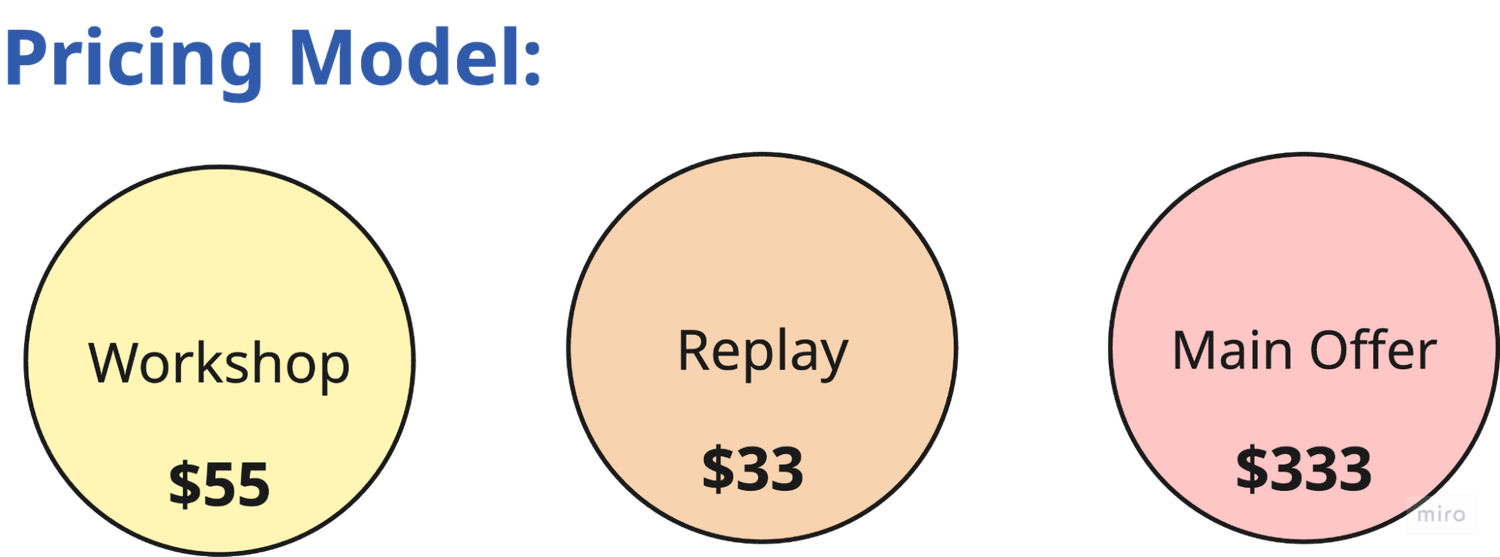
This Is How The Funnel Worked:
Chester would post about the workshop on his IG Stories and Reels to tap into his 300k-strong following. The CTA was simple: “Reply with [keyword] to get the link to register.”
Once someone replied with that keyword, we had an automation in place that would instantly send them the registration link in their DMs. Smooth, fast, no friction.
Now, because this was a paid workshop, I already knew there would be a good chunk of people who’d drop off the moment they saw a price. And if they left without registering, we’d have zero way of following up.
No email, no second chance.
That’s a big missed opportunity.
So, we came up with an ingenious plan - making the registration a two-step process.
We split the registration page into two.
Instead of leading with “Pay $55.55,” the first page simply said seats were limited and gave them a button to “Check ticket availability”.
No price talk yet, just curiosity and a bit of FOMO (this immensely helped with our opt-in rates).
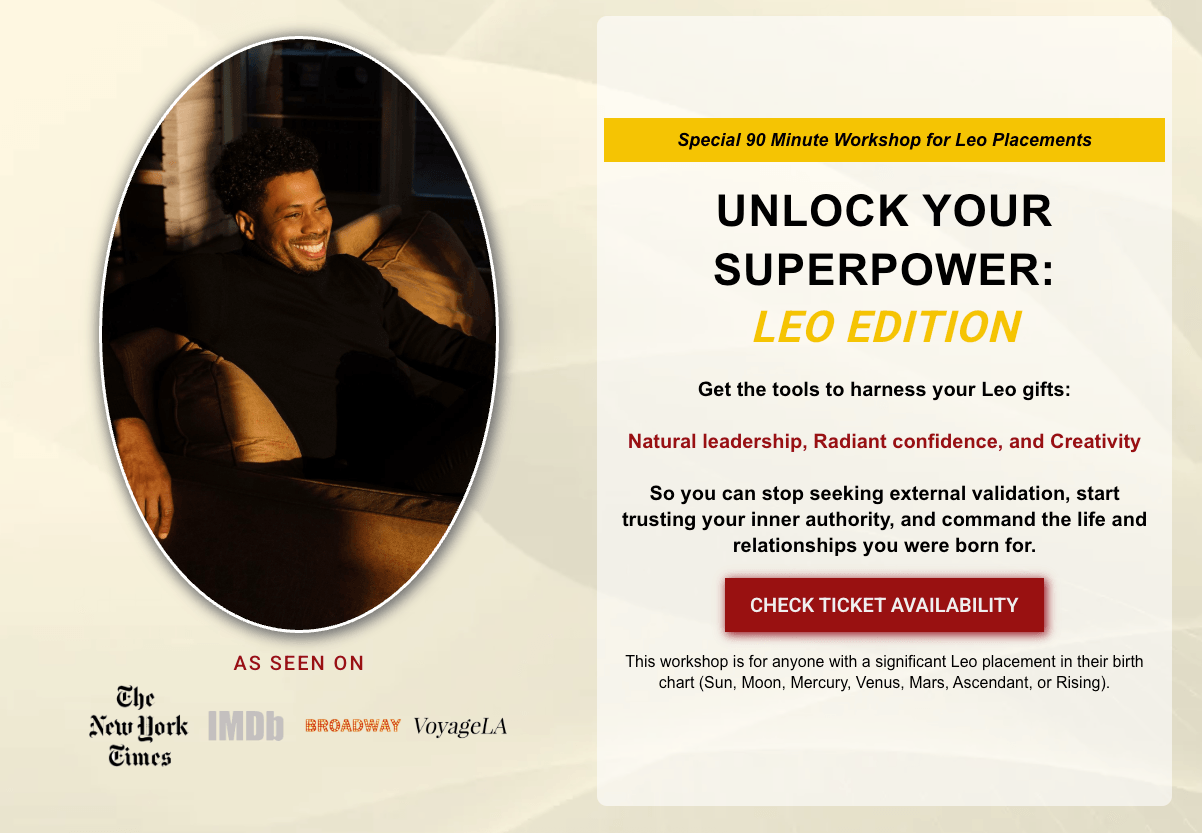
Example of what the opt-in page looks like for our next “Leo” workshop.
When they clicked that button, we asked for their name and email “to verify availability.”
That’s how we got their contact info before they saw the actual offer.
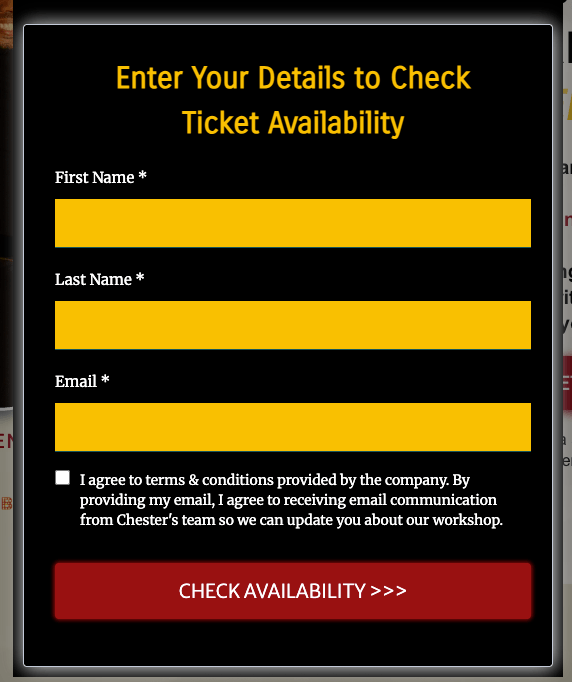
Right after submitting, they landed on the second (real) landing page with more details about the workshop offer.
To pick up from where we left, we had a banner at the top that said something like “Congratulations, we will have X spots left” to continue the conversation.
The X was a dynamically updating variable (yes, I manually coded it).

Until this point, the visitor did not know the workshop had a price tag of $55.55.
This page finally gave them the full details: the $55.55 price, bonuses, what they’d learn, FAQs – everything they’d need to make a decision.
Sure, some people bounced when they saw the price, but now we had their email and could retarget them with follow-up sequences.
Big props to Robert Hartwell for the original inspiration for this two-step method.
The final launch-protocol had:
2 reels posted by Chester to promote the workshop
Manychat connected to these reels to send the sign up link
A registration page
A sales page
Email + SMS reminders for people who register but don’t buy the workshop ticket.
Email nurturing sequence for people who buy the ticket
Email sequence for people who sit through the workshop but don’t buy in on the main offer
Email reminders for registrants to get the recording
We were loaded!
(shoutout to Joe @its_joejohnson for helping me out with the systems and set up)!
Results

We launched the workshop within a month of starting work together. Here’s how it performed:
We only posted 2 promotional reels with 88k views. All of this was organic, built on strategy and trust.
Final Thoughts:
Before Chester even decided to work with me, I had already gone deep into his brand. I spent 4-5 hours building out a Miro board analyzing his entire community structure and identifying leaks in the strategy.
I recorded a 20-minute Loom video walking him through the insights. No contract. No promise of work.
I did it because that’s how I operate now.
I believe that if you can show someone the value you bring, they’ll remember it.
Anyways, if you’re a digital product seller with an audience and this sounds like the kind of strategic clarity and execution you need, feel free to reach out.
I’d love to help you turn your audience into something more.
Created with © systeme.io

